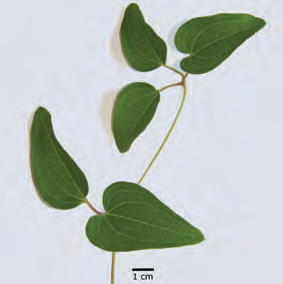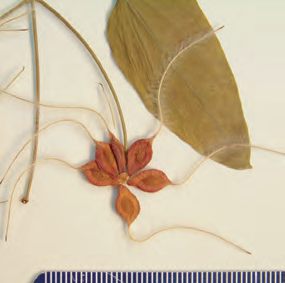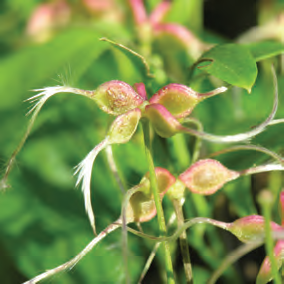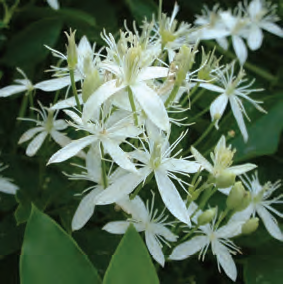Japanese Virgin’s Bower
Clematis terniflora Buttercup Family (Ranunculaceae) Herbaceous Vine Flowers: Aug–Sep Fruits: Oct Native Range: China, Japan
Introduction: 1864 as an ornamental, found in natural areas since the 1950s.
Mid-Atlantic Range & Habitats: Moist woods, thickets, hedgerows, stream banks and riverbanks. Most common in the southern Mid-Atlantic.


Japanese Virgin’s Bower vines can climb up to 10 meters and can kill the trees and shrubs supporting them. The species tolerates a wide range of soil pH and soil type. It is a prolific seed-producer and occurs at high densities in invaded habitats.

Quick ID
- Leaf Arrangement: Leaves usually with 5 leaflets (3 in a terminal cluster, plus 2 lateral)
- Leaflet Margin: Leaflet usually entire
- Fruit: Fruit 3+ mm wide
More ID Tips
Both of these species have opposite, compound leaves on a climbing vine. Japanese Virgin’s Bower has perfect flowers, meaning that each flower has both male (stamens) and female (pistils) parts; whereas native Virgin’s Bower hasmostly unisexual flowers, with male and female parts on separate flowers. In addition, the fragrant flowers of Japanese Virgin’s Bower have anthers greater than 1.5mm long. The unscented white flowers of native Virgin’s Bower have anthers that are less 1.5 mm long.


